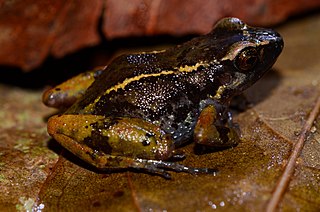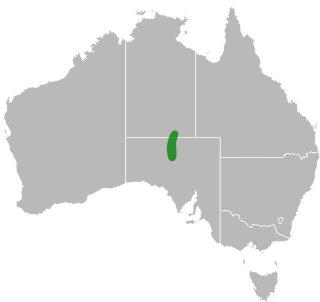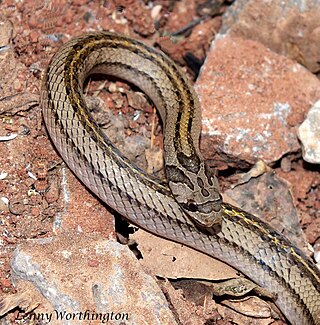
Colubridae is a family of snakes. With 249 genera, it is the largest snake family. The earliest species of the family date back to the Oligocene epoch. Colubrid snakes are found on every continent except Antarctica.

Axel Johann Einar Lönnberg was a Swedish zoologist and conservationist. Lönnberg was born in Stockholm. He was head of the Vertebrate Department of the Naturhistoriska Riksmuseet from 1904 to 1933.

Masticophis is a genus of colubrid snakes, commonly referred to as whip snakes or coachwhips, which are endemic to the Americas. They are characterized by having a long, thin body and are not dangerous to humans.

Arthroleptis taeniatus is a species of frog in the family Arthroleptidae. It is found in southern Cameroon, south-western Central African Republic, Equatorial Guinea, Gabon, western Democratic Republic of the Congo, and probably the Republic of the Congo. Its natural habitats are shallow marshes in forest. It can be locally threatened by habitat loss. It is common in parts of its range.

The bronzeback snake-lizard is a species of lizards in the family Pygopodidae endemic to Australia. It is monotypic in the genus Ophidiocephalus.

The striped whipsnake is a species of nonvenomous snake in the family Colubridae. It is closely related to the California whipsnake. The striped whipsnake is native to the western United States and adjacent northern Mexico.

Bothrops taeniatus, the speckled forest-pitviper, is a species of pit viper found in the equatorial forests of South America endemic to Colombia, Ecuador, Peru, And Brazil. The specific name, taenia, is derived from the Greek word, tainia, meaning ribbon bandage or stripe, in reference to the slender body. Two subspecies are currently recognized, including the nominate subspecies described here.
Bothrops taeniatus lichenosus is a venomous pitviper subspecies endemic to South America and known only from one locality in Bolívar State, Venezuela.
Oligodon moricei, commonly known as Morice's kukri snake, is a species of snake in the family Colubridae. The species is endemic to southern Vietnam.

Oligodon deuvei is a species of snake in the family Colubridae. The species is endemic to Southeast Asia.
Oligodon pseudotaeniatus, commonly known as the false striped kukri snake, is a species of colubrid snake. It is endemic to Thailand and known from the Nakhon Ratchasima Province, Saraburi Province, and Bangkok. The type series was collected by Malcolm Arthur Smith. The specific name pseudotaeniatus refers to its similarity to Oligodon taeniatus, with whom it was confused prior to its species description in 2008.

Lars Gabriel Andersson was a Swedish schoolteacher and herpetologist.
Tretanorhinus is a genus of snakes in the subfamily Dipsadinae of the family Colubridae.
Hensel's snake is a snake endemic to southern Brazil It is monotypic in the genus Ditaxodon.
Tretanorhinus mocquardi, Mocquard's swamp snake, is a species of snake in the family, Colubridae. It is found in Panama, Ecuador, and Colombia.
Tretanorhinus nigroluteus, the orange-bellied swamp snake or orangebelly swamp snake, is a species of snake in the family, Colubridae. It is found in Panama, Mexico, Guatemala, Honduras, Nicaragua,Belize, and Costa Rica.
Tretanorhinus variabilis, the Caribbean water snake, is a species of snake in the family, Colubridae. It is found in Cuba and the Cayman Islands.

The striped kukri snake is a species of snake of the family Colubridae.










